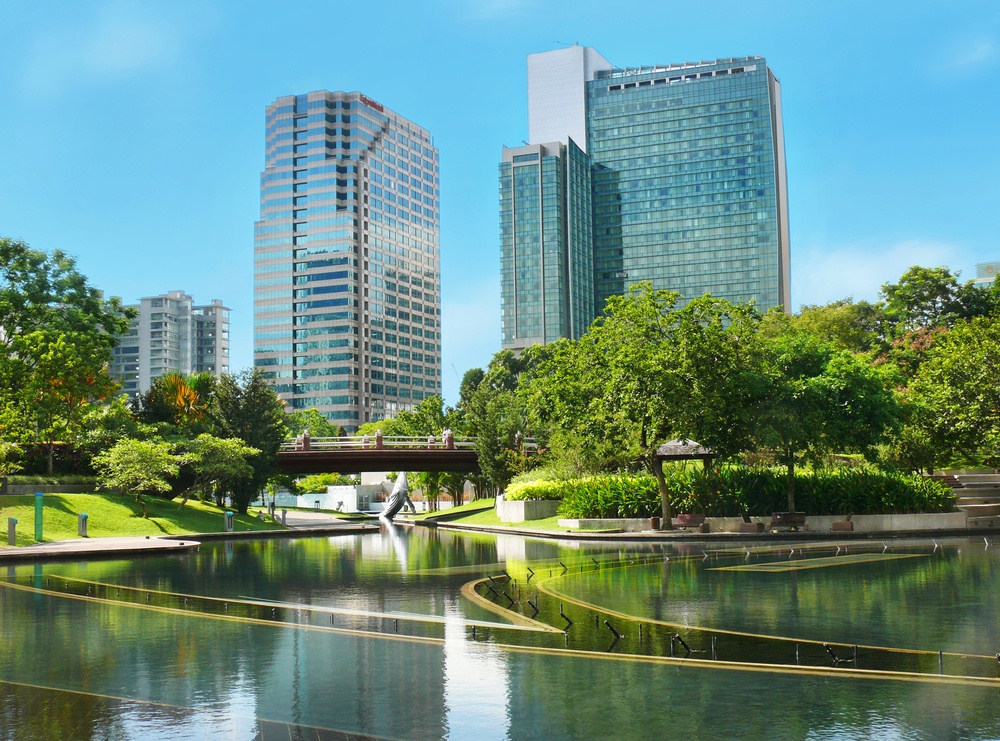The ZERO Code: An International Standard for Green Buildings

Architecture 2030 is a non-profit research organization, which has the goal of transforming the building sector globally. Buildings are currently a major source of greenhouse gas emissions (GHG), which means there is a huge opportunity to reduce their impact with energy efficiency and renewable generation.
According to the United Nations, the number of buildings in the world is expected to grow at a very fast pace over the following decades.
- Globally, building area will increase by 2.5 trillion sq.ft. by the year 2060.
- This is like adding new buildings equivalent to an entire New York City every 34 days.
- The global urban population is increasing by around 1.5 million per week.
If construction continues at such a pace without giving attention to energy performance and emissions, the impact on global climate can be severe. The Paris Agreement target is to keep global temperature rise below 2°C, and this is only possible if all buildings become carbon neutral by 2050. Building emissions have been steadily rising by 1% annually since 2010, and this trend must be stopped as soon as possible.
To address the issue of building emissions, Architecture 2030 published the ZERO Code on June 2018. The main goal of the code is to provide an international framework for Zero-Net-Carbon (ZNC) buildings, which can be adapted to local building codes.
- As its name implies, a ZNC building has zero net emissions. This can be accomplished if 100% of the energy used by the building comes from renewable sources.
- In cases where the building is forced to use energy sources that produce emissions, it can still become ZNC by producing surplus renewable energy until the carbon footprint is offset.
The ZERO Code has a very broad scope, covering new commercial and institutional buildings, as well as mid-rise and high-rise residential projects. These building categories cover most new projects in modern cities. The code proposes an international framework for ZNC buildings, which can become mandatory if adopted by local governments.
Identify the most promising energy upgrades for your building.
How the ZERO Code Improves Buildings
To minimize the energy consumption and environmental footprint of buildings, the ZERO code proposes a three-step approach:
- Minimizing energy demand with a high-performance building envelope, daylighting, passive design, energy efficiency measures and building controls.
- On-site renewable energy generation, deploying the highest capacity that is feasible.
- If the building’s energy demand cannot be met only with on-site generation, the rest can come from off-site renewable systems like solar farms, wind turbines or hydropower.
Similar to how the NYC Energy Conservation Code works, the ZERO Code provides two compliance paths. It is based on the ASHRAE 90.1-2016 Energy Standard for Buildings Except Low-Rise Residential Buildings.
- The prescriptive approach uses predetermined measures that are outlined in the code.
- The performance approach validates building performance based on energy modeling.
In theory you can have a zero emissions building without energy efficiency, but that is an extremely expensive approach, since you need more renewable generation capacity to compensate for energy waste. For this reason, the ZERO Code adds energy efficiency requirements, even when it would be possible to reach zero emissions without them.
The ZERO Code focuses on new buildings, since the opportunity to control emissions is greater. Existing buildings can also reduce their energy consumption and emissions, but passive design features and envelope improvements have limited applications on existing structures and walls.
Just like the NYC Energy Code, the ZERO Code includes documentation and labeling requirements, along with project commissioning to validate performance.
ZERO Code: Complementary Technical Guide and Software
Renewable energy is a complex topic, and selecting the best sources for a project can be a significant engineering challenge:
- Some technologies may perform better than others depending on property conditions, local regulations and incentive programs.
- On-site deployment is not possible in many cases, but there are many ways to purchase renewable generation from third parties.
Architecture 2030 has created a technical support document along with the ZERO code, which provides a detailed guide on how to procure renewable energy when on-site generation is not possible or insufficient. The guide provides a detailed description of the purchase options available, pointing out advantages and limitations.
The ZERO Code Energy Calculator was developed to simplify code compliance for property owners following the prescriptive approach of ASHRAE 90.1-2016. The software tool is free and open source, and it is available as both a website and a mobile application.
Conclusion
The ZERO Code only becomes mandatory if adopted by local authorities, but a high-performance building is a valuable asset even when energy efficiency and renewable generation are optional. In addition, New York City has been characterized by building performance leadership, and it is very likely that the ZERO Code will be adopted in the near future.

Michael Tobias
Michael Tobias, the Founding Principal of NY Engineers, currently leads a team of 50+ MEP/FP engineers and has led over 1,000 projects in the US
Join 15,000+ Fellow Architects and Contractors
Get expert engineering tips straight to your inbox. Subscribe to the NY Engineers Blog below.



